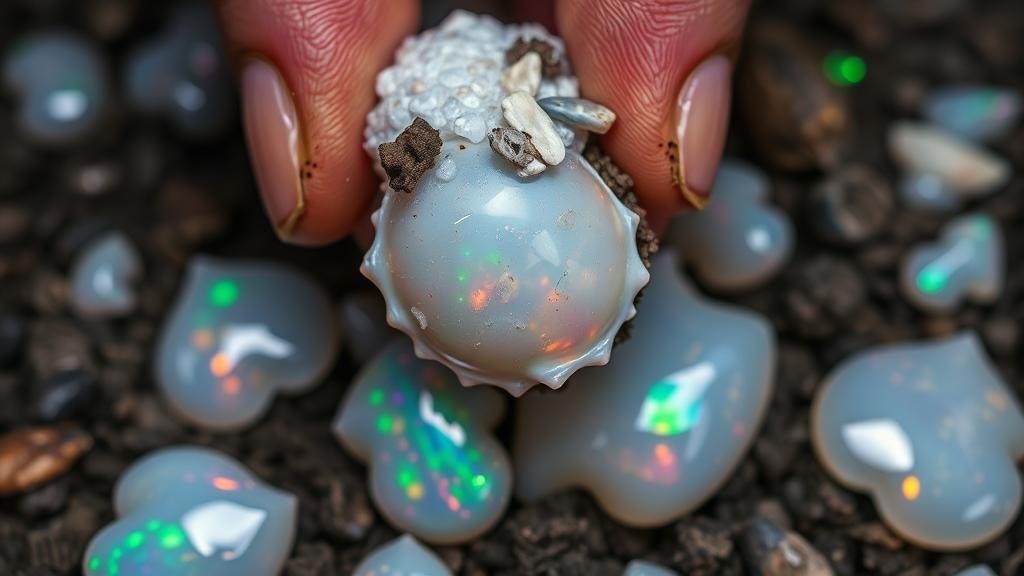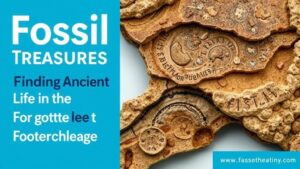Unearthing opalized shells in the volcanic deposits surrounding the Tres Montosas region.
Unearthing Opalized Shells in the Volcanic Deposits Surrounding the Tres Montosas Region
The Tres Montosas region, located in the heart of a volcanic landscape, offers a treasure trove for rockhounds and mineral collectors alike. Among its many geological wonders, the opalized shells found within its layers stand out as both captivating and scientifically significant. This article aims to provide insights into how these unique specimens form, the conditions under which they are discovered, and practical tips for collectors venturing into this fascinating area.
The Geological Background of Tres Montosas
The Tres Montosas region is characterized by its rich volcanic history, shaped by numerous eruptions over millions of years. volcanic deposits consist mainly of ash, pumice, and other igneous materials that have contributed to the mineral diversity found in the area.
The environment is particularly conducive to the formation of opal, a mineraloid that is created through the gradual dissolution of silica-rich materials. This process often leads to the replacement of organic material, such as shells, with opal. The resulting opalized shells can exhibit vibrant colors and patterns, making them highly sought after by collectors.
Formation of Opalized Shells
The transformation of shells into opal begins when the original calcium carbonate structure of the shell undergoes a replacement process. Rainwater, rich in silica, seeps into the volcanic deposits, and over time, replaces the shells original material with silica gel. As this gel solidifies, it forms opal. The entire process can take thousands to millions of years, leaving behind stunning fossils that possess both scientific and aesthetic value.
Opalized shells possess distinctive features that make them attractive to collectors:
- Color Play: Opal is known for its iridescent color play, often displaying hues of blue, green, and orange. This effect is due to the microstructure of the opal that diffracts light.
- Fossil Patterns: Original shell patterns may be preserved in the opal, providing insights into the organisms morphology.
- Varieties of Opal: The opalized shells can include different varieties of opal–such as precious, common, or boulder opal–attributing varying levels of value based on the specimens characteristics.
Hunting for Opalized Shells
For rockhounds looking to explore the Tres Montosas region, certain strategies can maximize the chances of finding opalized shells:
- Optimal Timing: Visit the area after a heavy rain, which can wash away loose debris and expose previously hidden fossils.
- Targeted Locations: Focus on areas with significant volcanic deposits, particularly where erosion has occurred, as these are more likely to reveal buried treasures.
- Tools of the Trade: Use a sturdy trowel for digging and a sieve to sift through the volcanic ash, which can contain small, well-preserved opalized specimens.
Scientific Significance and Conservation
Unearthing opalized shells not only satisfies the collectors passion but also offers insights into past marine environments. Researchers study these specimens to understand better the biodiversity of ancient seas and the geological conditions that led to their formation.
But, its crucial for collectors to approach their excavation responsibly. Always follow local guidelines related to fossil collection and ensure that you are not disrupting historical sites. Collaborate with geological groups or local universities when possible to contribute to scientific knowledge while promoting the conservation of the region’s unique geological heritage.
Conclusion: A Collectors Treasure
Finding opalized shells in the volcanic deposits of the Tres Montosas region can be both an exhilarating hobby and a rewarding scientific pursuit. With the right knowledge, tools, and respect for the environment, rockhounds can unearth pieces of natural history that not only add to their collections but also enhance our understanding of the earths dynamic processes.
Whether you are a seasoned collector or a curious novice, this region promises a rich landscape of geological wonders just waiting to be explored.



